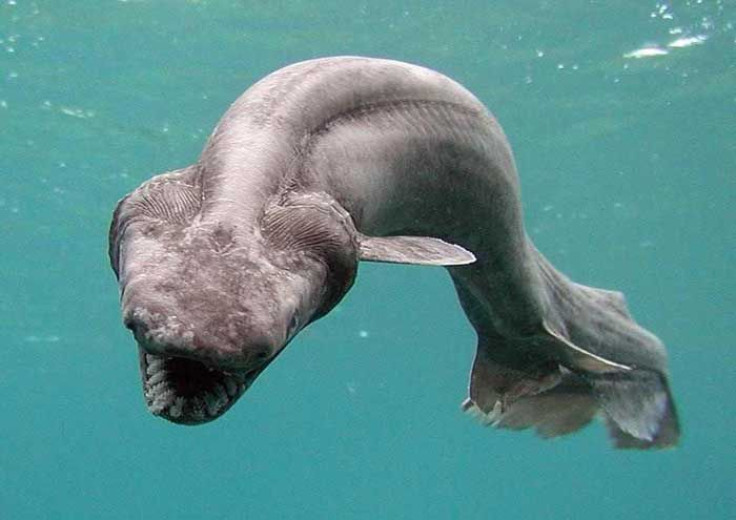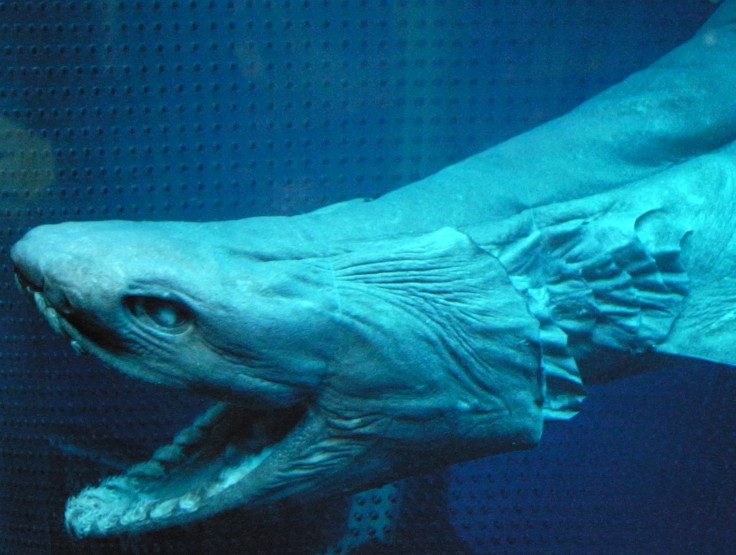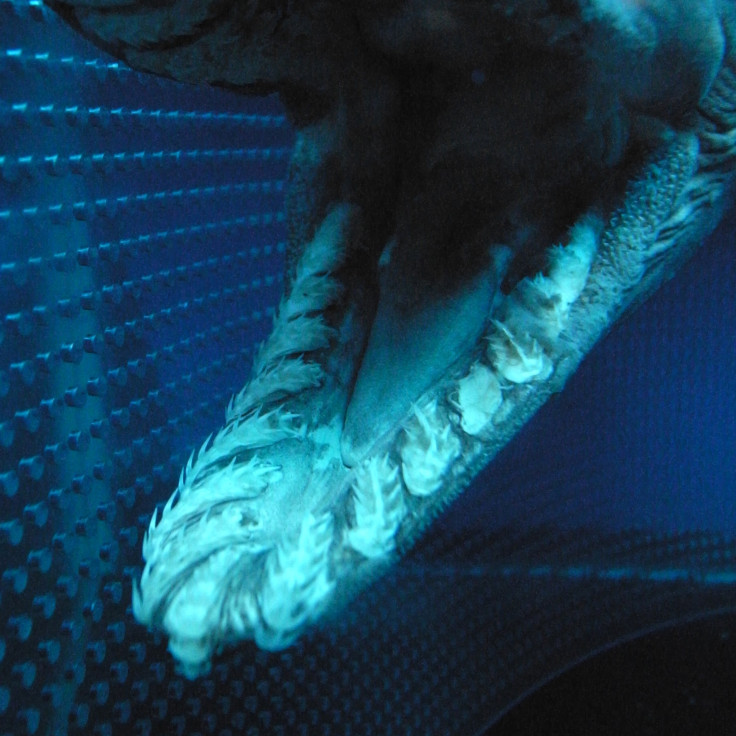Frilled Shark Photos, Video: Prehistoric Deep-Sea Monster Caught On Camera Again
The recent catch of a frilled shark (Chlamydoselachus anguineus) by researchers off the coast of Portugal has once again dragged this prehistoric marine monster out of the ocean depths and into the limelight. It is not the first time this species, mostly unchanged from 80 million years ago, has been spotted, but its appearance is rare enough to make headlines now (it was once upon a time responsible for sea serpent legends too, perhaps).

It is the frilled shark’s gills that give it its name. The gills have frilly edges, and the first gill slit runs continuously across the shark’s throat, making it unique among sharks to have this physical characteristic.

Another unusual bodily trait the frilled shark exhibits is its jaws, which end where its head ends. In most sharks, the jaws end underneath the head.

Its mouth has about 25 rows of trident-shaped teeth, approximately 300 of them.

Relatively speaking, the frilled shark’s pectoral fins (located just behind the gills) are small. The pelvic fins, often located right behind the pectoral, are located far down the body, along with the single dorsal fin and the anal fin.

Based on a specimen from Japan, the frilled shark was first described in 1884. In 2007, after being alerted by a fisherman, the Awashima Marine Park in Shizuoka, south of Tokyo, caught a 1.6-meter long (5 feet) female and released a video of the creature.
The frilled shark grows up to two meters in length, and is found across large areas of the Atlantic and Pacific oceans. It usually lives at depths between 600 and 1,000 meters, but has been caught as deep as over 1,500 meters. Since that is too deep for most human activity, and they almost never visit the ocean surface, they are rarely encountered, which could be part of the reason they create a sensation each time one of them is photographed.
© Copyright IBTimes 2024. All rights reserved.











